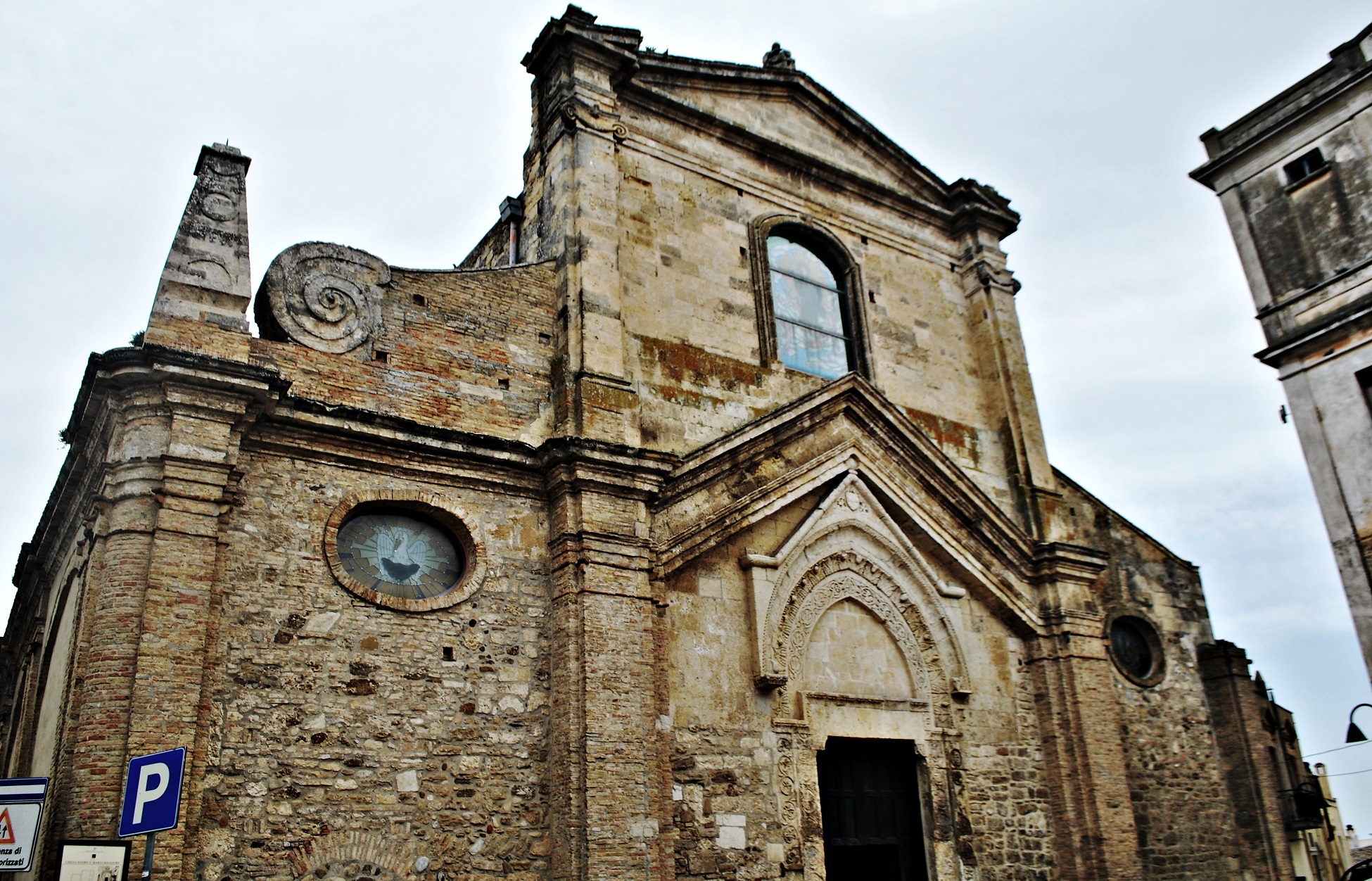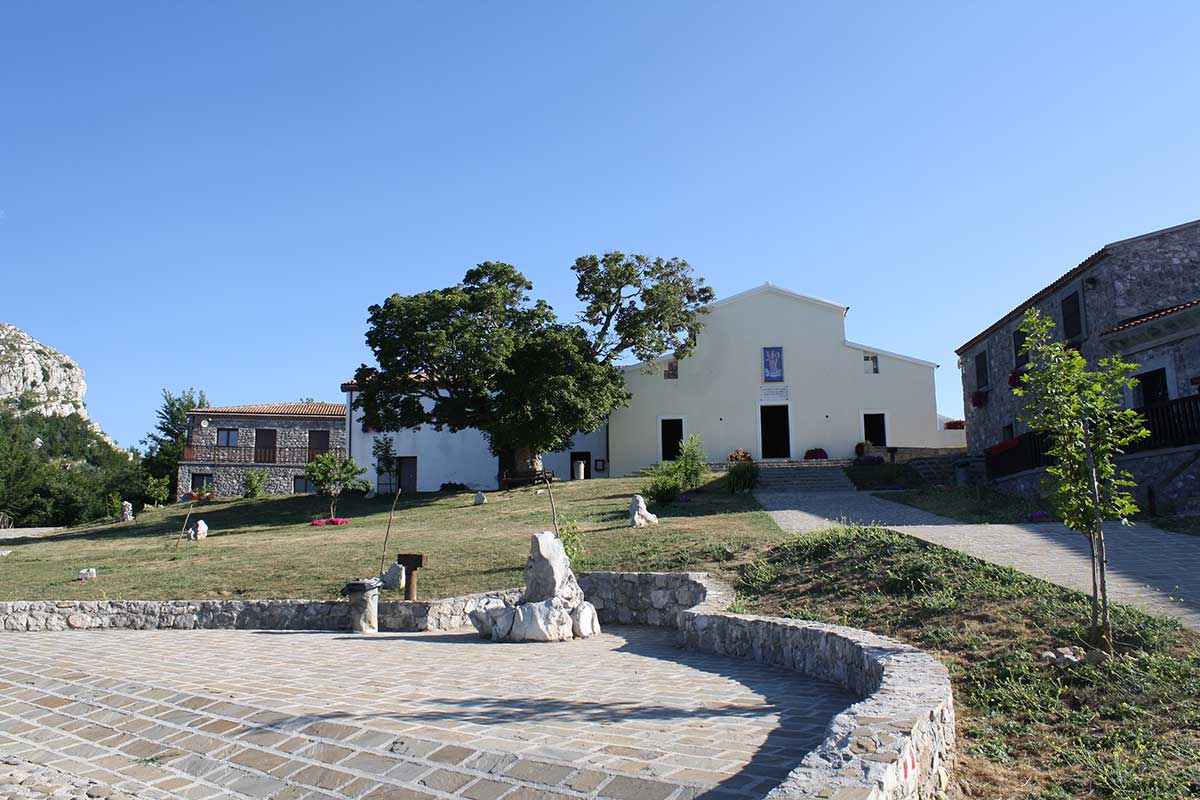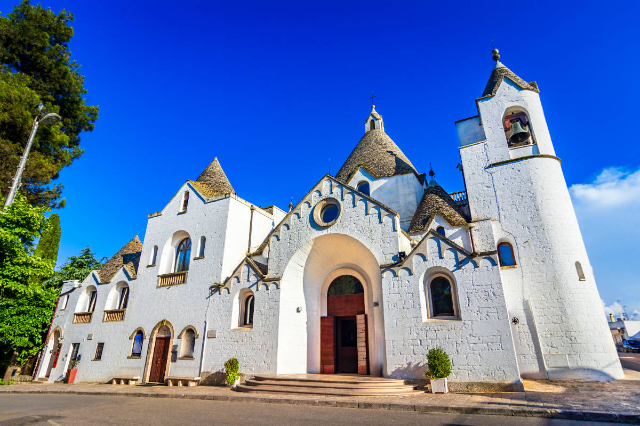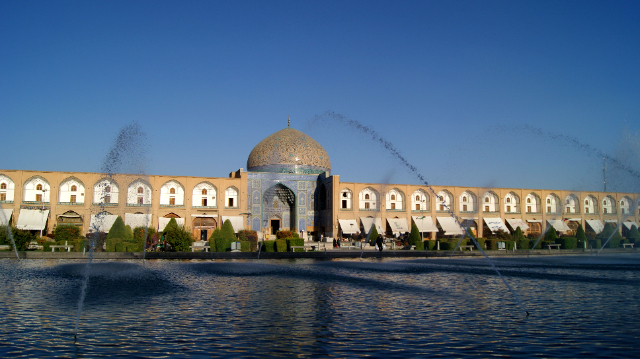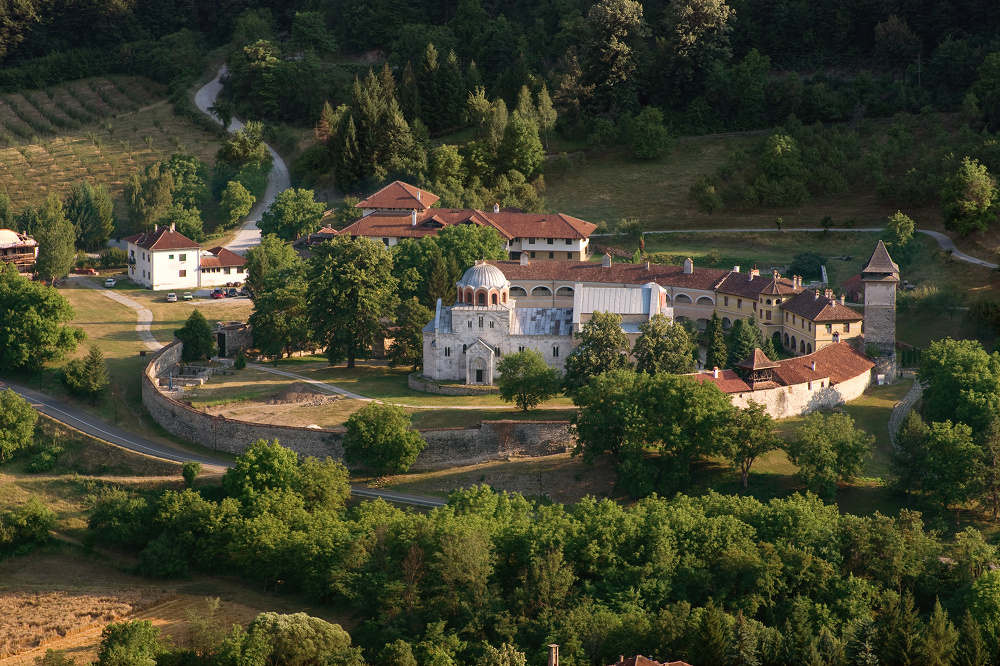It was erected starting from the 14th century on the site of a pre-existing church; later, between 1515 and 1534, it was enlarged by adding side chapels. The bell tower situated on the left side dates back to 1533. The church was of Orthodox rite until 1729, when the Latin rite was introduced.
The façade, at the height of the apex of the tympanum, presents a Madonna with Child dating back to the XVI century. The entrance portal carved in stone is attributed to the artist Nicola da Melissano and recalls the primitive plant of the church. On the left side of the church, the baroque side portal is surmounted by a lunette that keeps a stone representation of the Pietà, a work by Altobello Persio. Always on the left side there is the bell tower with a square plan and three orders, having a bas-relief situated in the second order with Saints Peter and Paul and the Eternal Father.
The interior, with a nave and two aisles, has undergone several renovations over the centuries. Inside the church there are several works of considerable importance:
the polyptych by Cima da Conegliano, a splendid work dating back to 1499 and consisting of 18 panels enclosed in a majestic wooden frame made of poplar;
a crucifix of 1629 made by the Franciscan Father Umile da Petralia;
the great baroque organ, composed of 321 pipes, realized in 1749 by master Rubino from Castellaneta using the pipes of a sixteenth-century organ, restored in 1993.
In the church there are also several paintings dated between the sixteenth and seventeenth centuries, including in the apse there are a Madonna and Child in Glory between Saints Eligius and Charles Borromeo and another depicting the Assumption, both attributed to Alessandro Fracanzano, father of the more famous Cesare and Francesco[1]; a Deposition from the Cross also dated between the sixteenth and seventeenth centuries, the work of a pupil of Antonio Stabile [1], located near the second altar of the left aisle; a painting by Pietro Antonio Ferro of 1607 depicting the Madonna and Child with Saints Bartholomew and Martin, also in the apse; the Madonna del Rosario signed by Girolamo Todisco and dated 1634, on the first altar of the right aisle.
In the right aisle there is also the chapel with the altar of St. Anthony of Padua, with two bas-reliefs dating back to the 16th century; on the altar there is the wooden statue of the Saint.
The Polyptych, executed in 1499 by Giovan Battista Cima, was probably bought in Leipzig by Duke Vincenzo Gonzaga of Mantua by Don Marcantonio Mazzone, chapel master of the Gonzaga family at the end of the 16th century; or, according to a local tradition, it was bought in Venice in 1598 by Mazzone himself, archpriest of Miglionico, as well as musician and man of letters. Placed in the parish church, it would have been donated to the prior of the convent of S. Francesco by Mazzone himself upon his departure from Miglionico.
The polyptych is made up of eighteen panels arranged in four orders and depicts the Madonna and Child enthroned in the center with the pedestal on the inscription "IOANES / BAPTISTA / P / 1499": at the sides, full-length, S. Francis, S. Jerome. S. Pietro e Sant’AntonioParticular of the Polyptych by G.B. Cima da Conegliano: Madonna with Child (Mother Church Santa Maria Maggiore) from Padua; in the order above, half-length, S. Chiara, S. Ludovico, S. Bernardino and S. Caterina d’Alessandria; in the cymatium, Christ Passing between the Annunciation and the Announcing Angel; finally, in the predella, Franciscan martyr Saints. The central tablet of the predella is missing where, perhaps, the Nativity was depicted.
Dismembered, it was reassembled in the current frame made in 1782 by the Barons Del Pozzo of Miglionico, who added, in the central panel, at the bottom right, the family crest.
Ignored by the critics, in 1907 the scholar Martin Wackernagel, for comparisons with the Pala Dragan ("Madonna dell’Arancio" of the Galleria dell’Accademia in Venice, about 1496) attributed it to Giovan Battista Cima da Conegliano. The architectural scheme is the same already used in the polyptych of the parish church of Olera (BG) (1489) and that Detail of the Polyptych of G.B. Cima da Conegliano: Christ (Chiesa Madre Santa Maria Maggiore) will be reproposed in the parish church of S. Fior (Tv) (1507). The gilded background of the Olera polyptych is replaced by open skies crossed by feathery cirrus clouds and, behind the full-length Madonna and Saints, by landscapes of hills sloping towards the water on whose banks a village with a church is bathed. The figures of the Virgin and the Saints, serene and tranquil, in perfect harmony with the surrounding landscape, are described by means of a drawing with a very simple and precise geometry, modulated by a range of apparently cold colors but spread with fineness of gradation and with combinations of singular clarity.
The polyptych has been restored several times: a first intervention dates back to 1928; a subsequent prompt intervention in 1962, on the occasion of the exhibition in Treviso. In 1964, the eighteen panels were transported to the Central Institute of Restoration in Rome, where they underwent total restoration: the wooden supports were freed from the eighteenth-century plasterwork, disinfected from woodworm, repaired in the cracks and consolidated with resin and paraloid. Since the paintings had been retouched and were covered by a layer of dirt and oxidized varnish, the paintings were cleaned and rebalanced in watercolor and the gaps were filled in. In 1972 it became necessary to completely disinfect the work; in 1989-90 the restoration of the eighteenth-century frame was carried out. In 1997, before the restitution to the town of Miglionico, the restoration of the antependium and the revision of the golden wooden frame was carried out by the restorers of the Superintendence for Artistic and Historical Goods of Matera.
(taken from Miglionicoweb)
